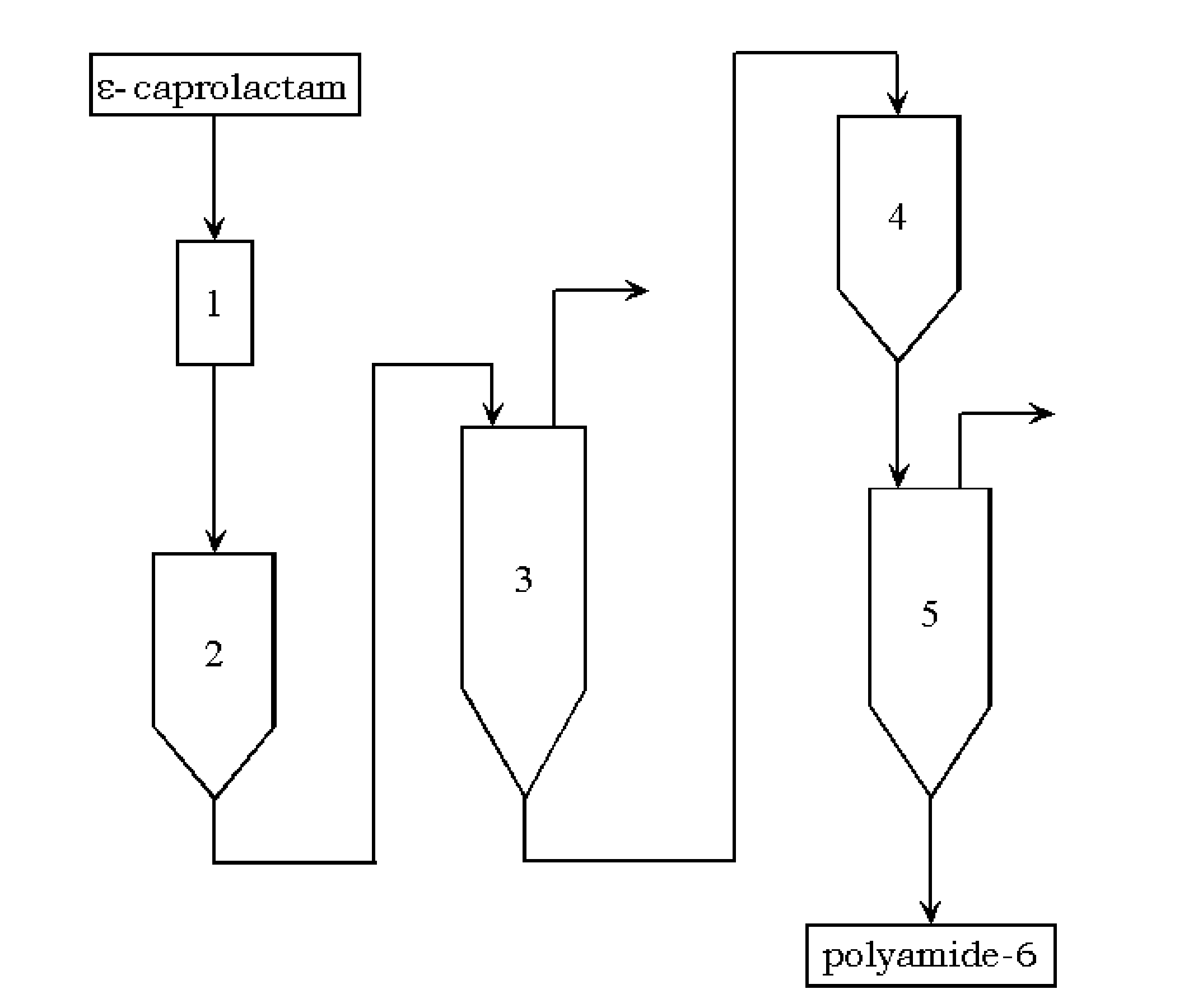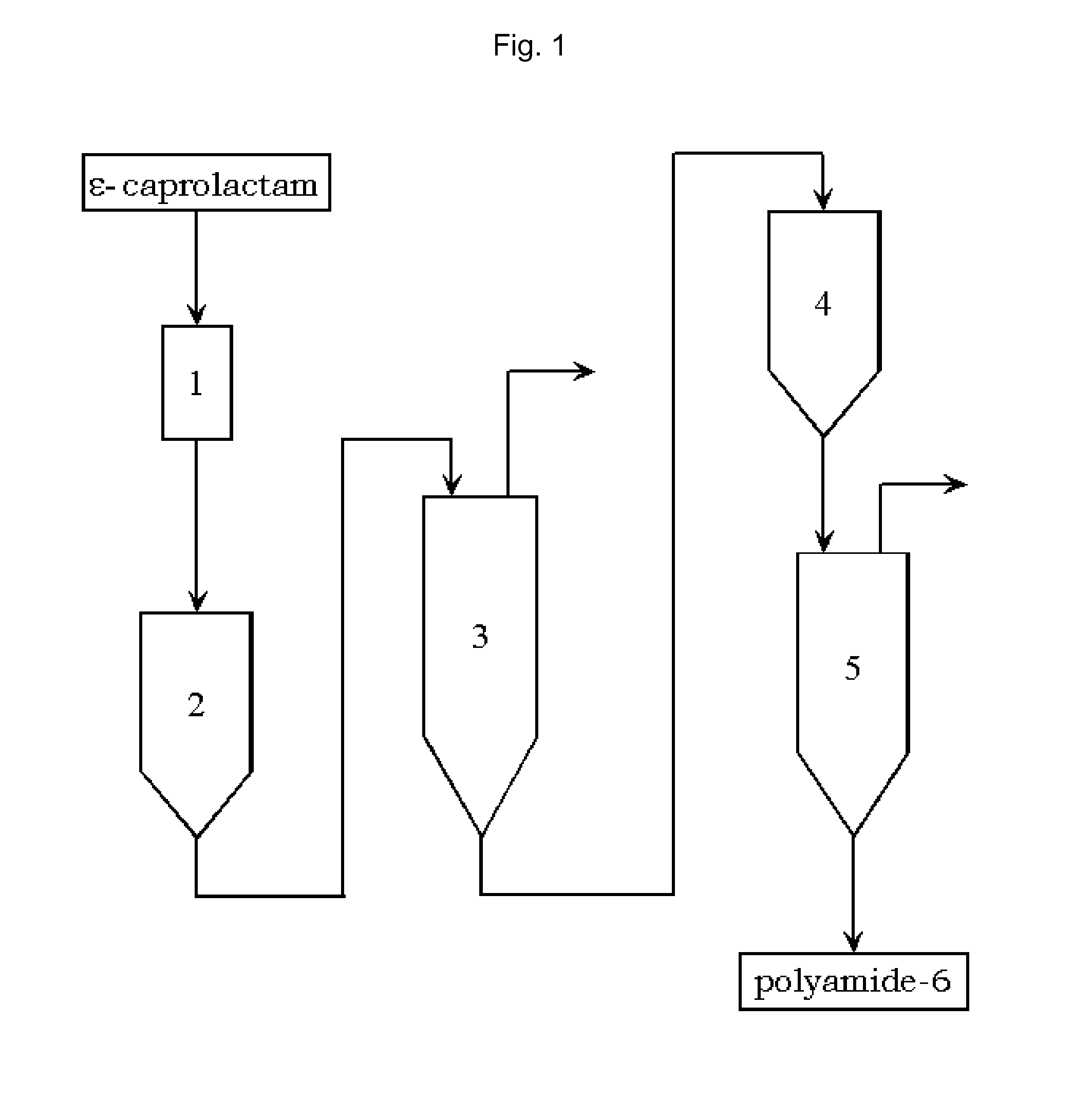Preparation of polyamides by hydrolytic polymerization, postpolymerization and subsequent extraction
a polyamide and hydrolysis technology, applied in the field of polyamide preparation, can solve the problem of unattainable residual monomer content of polyamides, and achieve the effect of low residual monomer conten
- Summary
- Abstract
- Description
- Claims
- Application Information
AI Technical Summary
Benefits of technology
Problems solved by technology
Method used
Image
Examples
examples
FIG. 1: Process According to the Invention for Preparation of Polyamide-6
examples 1-5
[0116]The starting material was a pelletized polyamide-6 intermediate available on the industrial scale, which was taken from a polyamide-6 production process after the pelletization which follows the one-stage melt polymerization in a VK tube. This intermediate had a viscosity of 139 ml / g, a caprolactam content of 12.84% and a dimer content of 0.37%.
[0117]For postpolymerization in the solid phase, 100 g of pellets were heat treated in a solid phase apparatus. The solid phase apparatus consisted of a glass tube with a frit base, which was heated by means of an outer jacket. The pellets were introduced into the preheated glass tube and hot nitrogen flowed through over a particular residence time. After the residence time, the pellets were removed and transferred to an extraction apparatus. The extraction apparatus used was a 2 l tank. This was done by first initially charging deionized water and heating it to 90° C. Addition of the pellets was followed by heating to the extraction te...
PUM
| Property | Measurement | Unit |
|---|---|---|
| temperature | aaaaa | aaaaa |
| temperature | aaaaa | aaaaa |
| diffusion distance | aaaaa | aaaaa |
Abstract
Description
Claims
Application Information
 Login to View More
Login to View More - R&D
- Intellectual Property
- Life Sciences
- Materials
- Tech Scout
- Unparalleled Data Quality
- Higher Quality Content
- 60% Fewer Hallucinations
Browse by: Latest US Patents, China's latest patents, Technical Efficacy Thesaurus, Application Domain, Technology Topic, Popular Technical Reports.
© 2025 PatSnap. All rights reserved.Legal|Privacy policy|Modern Slavery Act Transparency Statement|Sitemap|About US| Contact US: help@patsnap.com


